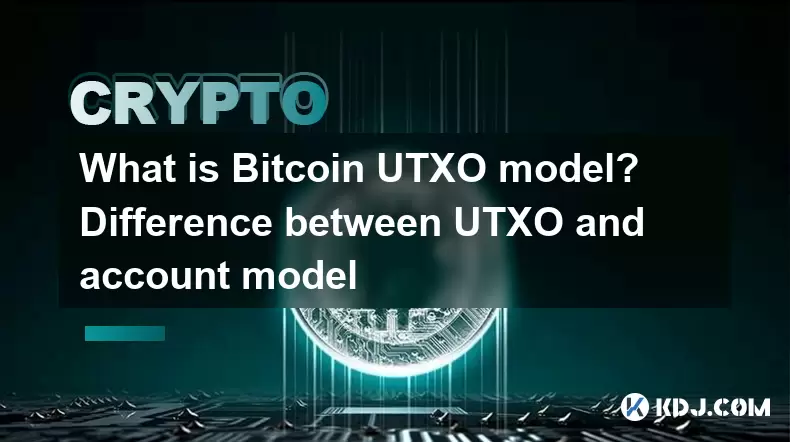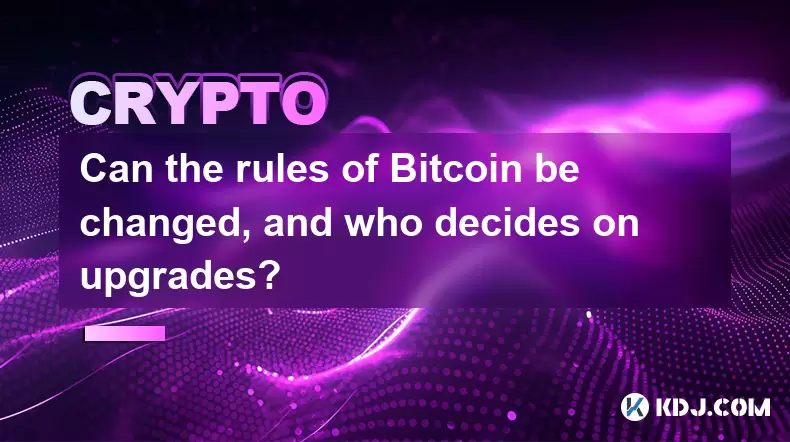-
 Bitcoin
Bitcoin $113900
-1.39% -
 Ethereum
Ethereum $3517
-4.15% -
 XRP
XRP $3.009
1.59% -
 Tether USDt
Tether USDt $0.9997
-0.04% -
 BNB
BNB $766.8
-1.41% -
 Solana
Solana $164.6
-2.38% -
 USDC
USDC $0.9998
-0.02% -
 TRON
TRON $0.3277
0.65% -
 Dogecoin
Dogecoin $0.2023
-1.67% -
 Cardano
Cardano $0.7246
0.05% -
 Hyperliquid
Hyperliquid $38.27
-4.77% -
 Sui
Sui $3.528
-0.52% -
 Stellar
Stellar $0.3890
-0.73% -
 Chainlink
Chainlink $16.16
-2.69% -
 Bitcoin Cash
Bitcoin Cash $539.9
-4.38% -
 Hedera
Hedera $0.2425
-2.00% -
 Avalanche
Avalanche $21.71
-0.97% -
 Toncoin
Toncoin $3.662
5.73% -
 Ethena USDe
Ethena USDe $1.000
-0.02% -
 UNUS SED LEO
UNUS SED LEO $8.964
0.35% -
 Litecoin
Litecoin $107.7
2.33% -
 Shiba Inu
Shiba Inu $0.00001223
-0.40% -
 Polkadot
Polkadot $3.617
-0.97% -
 Uniswap
Uniswap $9.052
-2.49% -
 Monero
Monero $295.1
-3.79% -
 Dai
Dai $0.9999
0.00% -
 Bitget Token
Bitget Token $4.315
-1.85% -
 Pepe
Pepe $0.00001060
0.11% -
 Cronos
Cronos $0.1342
-2.72% -
 Aave
Aave $256.0
-0.87%
What is Bitcoin UTXO model? Difference between UTXO and account model
The Bitcoin UTXO model ensures secure, transparent transactions by requiring full consumption of unspent outputs, preventing double-spending and enhancing blockchain integrity.
Jun 16, 2025 at 08:57 am

Understanding the Bitcoin UTXO Model
The Bitcoin UTXO (Unspent Transaction Output) model is a fundamental concept in how Bitcoin transactions are structured and validated. Unlike traditional banking systems, which track account balances directly, Bitcoin uses a ledger system where each transaction consumes existing outputs and creates new ones. These unspent outputs are known as UTXOs, and they represent the amount of Bitcoin that a user can spend.
Each time a Bitcoin transaction occurs, it must reference one or more UTXOs as inputs. The total value of these inputs is then used to create new outputs, which become new UTXOs for future transactions. Any leftover amount after the transaction is sent back to the sender as change, creating another UTXO.
How the UTXO Model Works
To understand how the UTXO model works, consider this scenario: Alice wants to send 0.5 BTC to Bob. She has a UTXO worth 1 BTC. In her transaction, she will use that entire 1 BTC UTXO as an input. She sends 0.5 BTC to Bob and returns the remaining 0.5 BTC to herself as change. This results in two new UTXOs: one for Bob worth 0.5 BTC and another for Alice worth 0.5 BTC.
This process ensures that every transaction is atomic and verifiable. Each UTXO must be fully consumed when used — partial spending is not allowed. This design prevents double-spending and maintains the integrity of the blockchain.
Difference Between UTXO and Account Model
The account model, used by many other cryptocurrencies like Ethereum, operates differently. In this model, each address has a balance that can be updated through transactions. When a user sends funds, their balance decreases, and the recipient’s increases. There's no need to break down the transaction into discrete inputs and outputs.
In contrast, the UTXO model functions more like cash transactions. Just as you might use a $20 bill to buy something costing $15 and receive $5 in change, Bitcoin transactions must consume full UTXOs and return any excess as new UTXOs. This distinction affects scalability, privacy, and how transactions are processed across different blockchains.
Technical Implications of UTXO vs Account Model
From a technical standpoint, the UTXO model allows for greater parallel processing of transactions because each UTXO can be handled independently. This makes it easier to scale certain aspects of the network without requiring global state updates.
Conversely, the account model requires tracking the state of every account, which can lead to bottlenecks during high transaction volumes. Every transaction in the account model must verify and update the current balance of both sender and receiver, which can slow things down if not optimized properly.
Additionally, UTXO-based systems offer better privacy features since each transaction doesn’t reveal the total balance of a wallet. Instead, only the specific UTXOs involved in a transaction are exposed.
Use Cases and Practical Examples
When building applications on top of Bitcoin, developers must carefully manage UTXOs. For example, wallets must select appropriate UTXOs to include in a transaction based on size and fee efficiency. If too many small UTXOs are used, the transaction becomes larger and more expensive in terms of fees.
Smart contract platforms using the account model, like Ethereum, simplify interactions with contracts and balances. However, they face challenges related to state bloat and gas calculations. Developers working with UTXO-based smart contracts (such as those on Cardano or Ergo) must structure logic around inputs and outputs rather than simple balance changes.
For instance, if a decentralized application (dApp) needs to validate a payment condition, it must evaluate the UTXO set to ensure all required conditions are met before allowing the transaction to proceed.
How to Manage UTXOs in Practice
Managing UTXOs effectively involves understanding how your wallet selects them for transactions. Here’s a detailed guide:
- Always monitor your UTXO set to avoid fragmentation.
- Use consolidation transactions during low fee periods to merge small UTXOs.
- Choose wallets that allow manual selection of UTXOs for custom control.
- Be aware of dust UTXOs — very small outputs that cost more to spend than they’re worth.
Wallets often implement coin selection algorithms such as:
- Oldest-first: Selects the earliest available UTXO.
- Largest-first: Uses the biggest UTXO to minimize the number of inputs.
- Smallest-first: Spends smaller UTXOs first to reduce change outputs.
These strategies impact transaction fees, confirmation times, and long-term wallet usability.
Frequently Asked Questions
Q: Can a UTXO be partially spent?
A: No. A UTXO must be fully consumed in a transaction. If the UTXO is larger than the required amount, the remainder is returned to the sender as change.
Q: How does the UTXO model affect transaction fees?
A: Larger numbers of UTXOs increase transaction size, which leads to higher fees. Efficient UTXO management can help reduce costs.
Q: Why don’t all blockchains use the UTXO model?
A: While UTXO offers benefits in scalability and privacy, it complicates smart contract development and balance tracking compared to the account model.
Q: What is a "dust" UTXO?
A: Dust refers to a UTXO whose value is so small that the cost of spending it exceeds its worth. It contributes to blockchain bloat and should generally be avoided.
Disclaimer:info@kdj.com
The information provided is not trading advice. kdj.com does not assume any responsibility for any investments made based on the information provided in this article. Cryptocurrencies are highly volatile and it is highly recommended that you invest with caution after thorough research!
If you believe that the content used on this website infringes your copyright, please contact us immediately (info@kdj.com) and we will delete it promptly.
- DeFi Token Summer Gains: Is Mutuum Finance the Real Deal?
- 2025-08-02 18:30:12
- Bitcoin, Realized Price, and the Top: Are We There Yet?
- 2025-08-02 18:30:12
- Dogwifhat (WIF) Rally: Will the Meme Coin Bite Back?
- 2025-08-02 19:10:12
- PayFi Heats Up: Tron's AMA Recap & TRX's Bullish Nasdaq Debut
- 2025-08-02 19:10:12
- ARK Invest, Coinbase, and BitMine: Decoding the Crypto Investment Shuffle
- 2025-08-02 19:15:23
- JasmyCoin Under Pressure: Bears Grip Tight, Testing Lower Support
- 2025-08-02 19:15:23
Related knowledge

What is the difference between holding Bitcoin on an exchange versus in a personal wallet?
Aug 02,2025 at 03:15pm
Understanding Custodial vs Non-Custodial ControlWhen holding Bitcoin on an exchange, users are essentially entrusting their assets to a third party. E...

Can governments shut down or ban Bitcoin?
Aug 02,2025 at 09:44am
Understanding Bitcoin’s Decentralized StructureBitcoin operates on a decentralized peer-to-peer network, meaning it is not controlled by any single en...

Can the rules of Bitcoin be changed, and who decides on upgrades?
Aug 02,2025 at 06:36am
Understanding Bitcoin's Governance ModelBitcoin operates without a central authority, which means no single entity has the power to unilaterally chang...

Who controls the Bitcoin network if there is no central company or bank?
Aug 02,2025 at 06:01pm
Understanding Decentralized Control in BitcoinThe Bitcoin network operates without a central authority, which raises the question of who controls it. ...

What is Bitcoin, and how does it function as a digital currency?
Aug 02,2025 at 04:01am
Understanding Bitcoin as a Digital CurrencyBitcoin is a decentralized digital currency that operates without the need for a central authority such as ...

What is the significance of the 21-week EMA in a Bitcoin bull market?
Jul 10,2025 at 06:56pm
Understanding the 21-Week EMA in Cryptocurrency AnalysisThe 21-week Exponential Moving Average (EMA) is a technical indicator widely used by traders a...

What is the difference between holding Bitcoin on an exchange versus in a personal wallet?
Aug 02,2025 at 03:15pm
Understanding Custodial vs Non-Custodial ControlWhen holding Bitcoin on an exchange, users are essentially entrusting their assets to a third party. E...

Can governments shut down or ban Bitcoin?
Aug 02,2025 at 09:44am
Understanding Bitcoin’s Decentralized StructureBitcoin operates on a decentralized peer-to-peer network, meaning it is not controlled by any single en...

Can the rules of Bitcoin be changed, and who decides on upgrades?
Aug 02,2025 at 06:36am
Understanding Bitcoin's Governance ModelBitcoin operates without a central authority, which means no single entity has the power to unilaterally chang...

Who controls the Bitcoin network if there is no central company or bank?
Aug 02,2025 at 06:01pm
Understanding Decentralized Control in BitcoinThe Bitcoin network operates without a central authority, which raises the question of who controls it. ...

What is Bitcoin, and how does it function as a digital currency?
Aug 02,2025 at 04:01am
Understanding Bitcoin as a Digital CurrencyBitcoin is a decentralized digital currency that operates without the need for a central authority such as ...

What is the significance of the 21-week EMA in a Bitcoin bull market?
Jul 10,2025 at 06:56pm
Understanding the 21-Week EMA in Cryptocurrency AnalysisThe 21-week Exponential Moving Average (EMA) is a technical indicator widely used by traders a...
See all articles

























































































